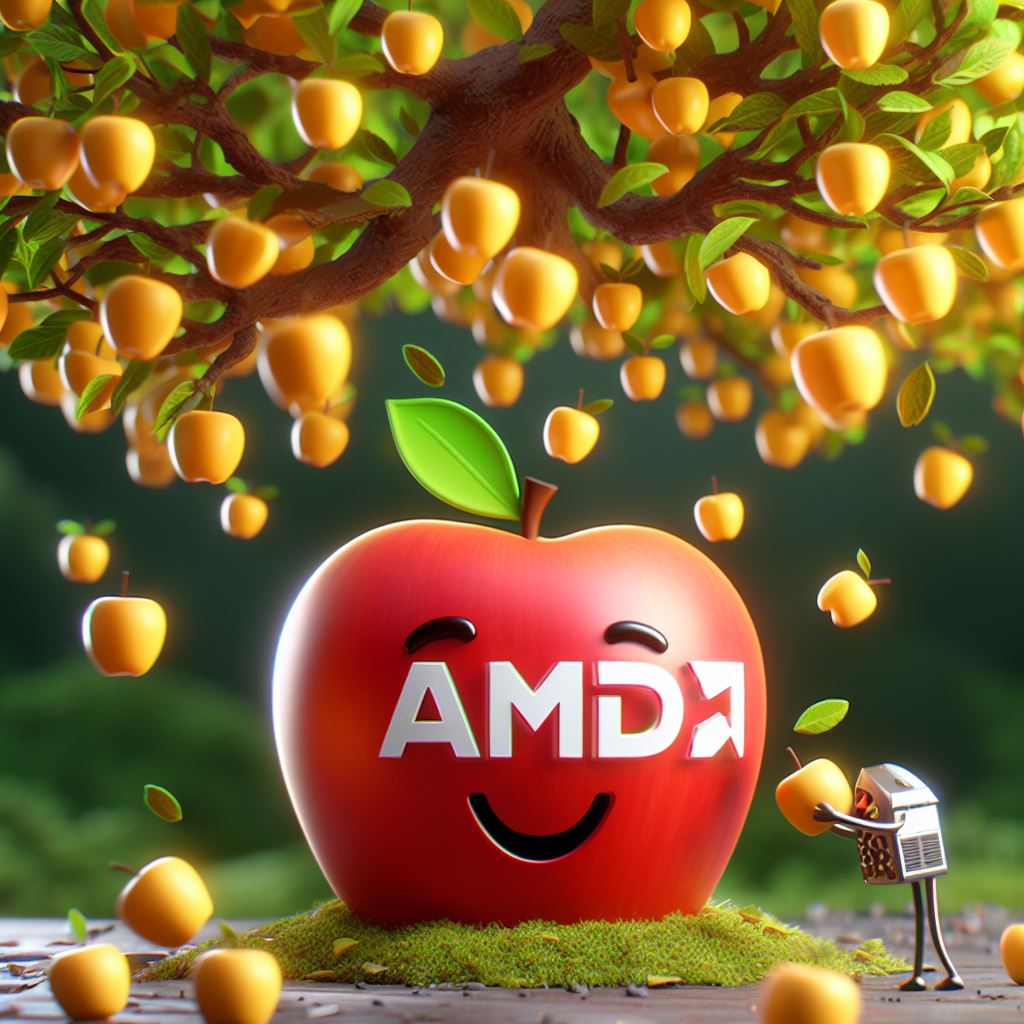Apple’s MetalFX Upscaling Technology Based on AMD FSR, Open Source Code Revealed
Recent revelations indicate that Apple’s MetalFX upscaling technology is based on AMD’s developments, specifically AMD FidelityFX Super Resolution (FSR). According to Apple’s documents, MetalFX heavily relies on AMD’s FSR, an open-source technology. Consequently, it appears that Apple may not be paying AMD for this technology, but per the licensing terms, Apple is required to acknowledge the use of this product in its software. This acknowledgment can be found in the Legal & Regulatory section of their documentation.

While MetalFX itself is not open source, implying that Apple has significantly modified AMD’s product for its specific needs, the foundation of MetalFX on AMD’s FSR opens interesting possibilities. Many games already released or upcoming for Apple devices, including titles like “Death Stranding,” “No Man’s Sky,” “Resident Evil Village,” “Myst,” “Resident Evil 4,” “Assassin’s Creed Mirage,” “Lies of P,” “Baldur’s Gate 3,” and “The Medium,” support AMD FSR.
The fact that MetalFX is fundamentally FSR could potentially lead to a more active expansion of FSR in the future.
Apple MetalFX, a framework that integrates with Metal, Apple’s fast graphics rendering technology, is now understood to be based on AMD’s FidelityFX Super Resolution (FSR) technology. Here’s an integrated overview combining this revelation with previous research:
- Foundation on AMD’s FSR: Apple’s MetalFX upscaling technology, as revealed in documents, is based on AMD FSR, an open-source technology. This choice by Apple, to build upon AMD’s developments, suggests a strategic approach to enhancing their graphics rendering capabilities.
- MetalFX and Metal Relationship: MetalFX adds to the capabilities of Metal, Apple’s rendering API optimized for Apple hardware, particularly with Apple Silicon GPUs. Introduced in 2020 for Apple Silicon CPUs and GPUs, MetalFX enhances scene rendering by recomputing and anti-aliasing frames for smoother object edges.
- Rendering and Upscaling Process: MetalFX improves rendering speeds by processing scenes at a lower resolution and then enlarging them. It uses spatial upscaling and temporal anti-aliasing upscaling for this purpose, utilizing techniques like supersampling and temporal sampling. These methods improve the overall resolution of the final frame more efficiently than rendering the entire scene at its final, larger dimension.
- Gaming Application: The integration of MetalFX in games promises to enhance scene resolution and game performance. Several high-profile games already use MetalFX on Apple devices, and with the revelation of its foundation on AMD FSR, it’s likely that more games will adopt this technology, benefiting from its efficient upscaling capabilities.
In conclusion, Apple’s MetalFX technology represents a significant innovation in graphics performance enhancement for Apple devices. Its foundation on AMD’s open-source FSR technology not only showcases a collaboration between two tech giants but also signals a new era in gaming and high-performance applications on Apple platforms. The potential for more extensive adoption of FSR in the future further underscores the importance of this technology in the graphics rendering landscape.
iPhone 16.Apple will reintroduce the top processor

